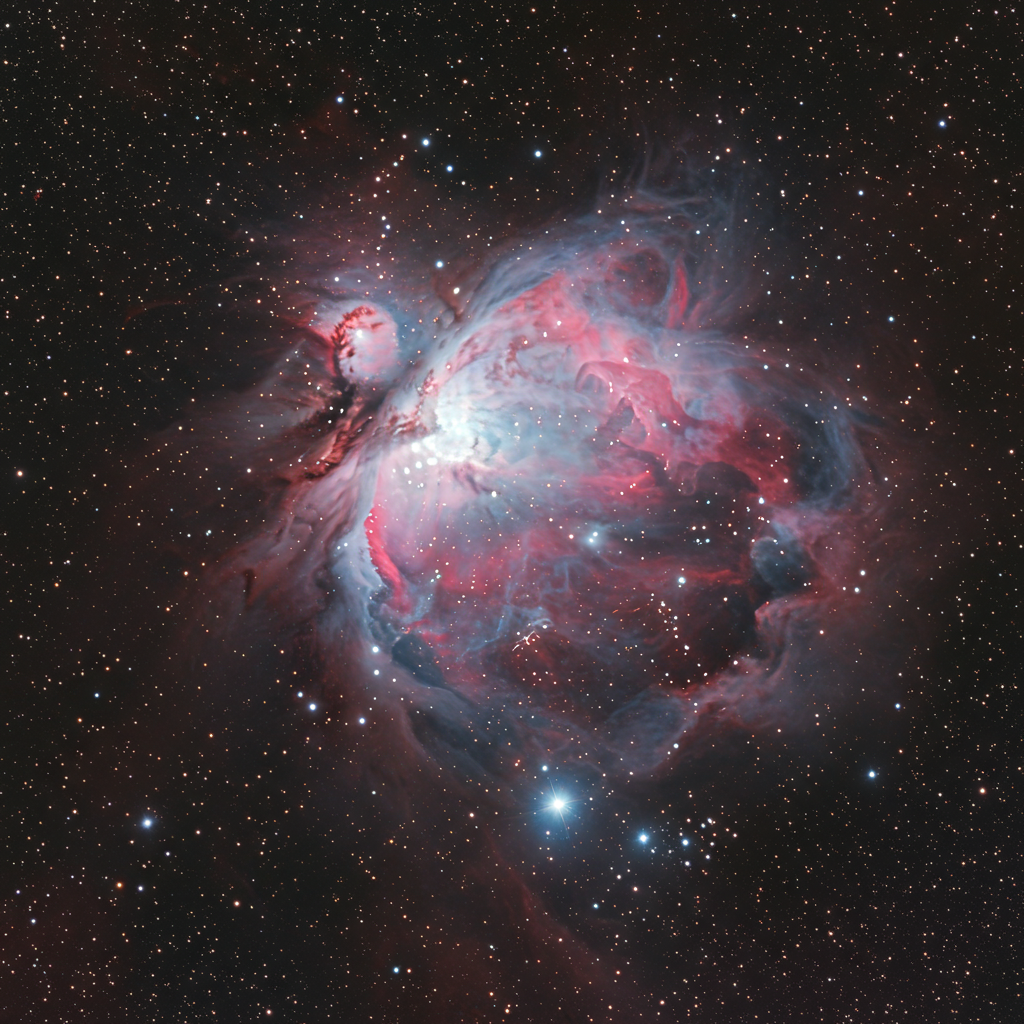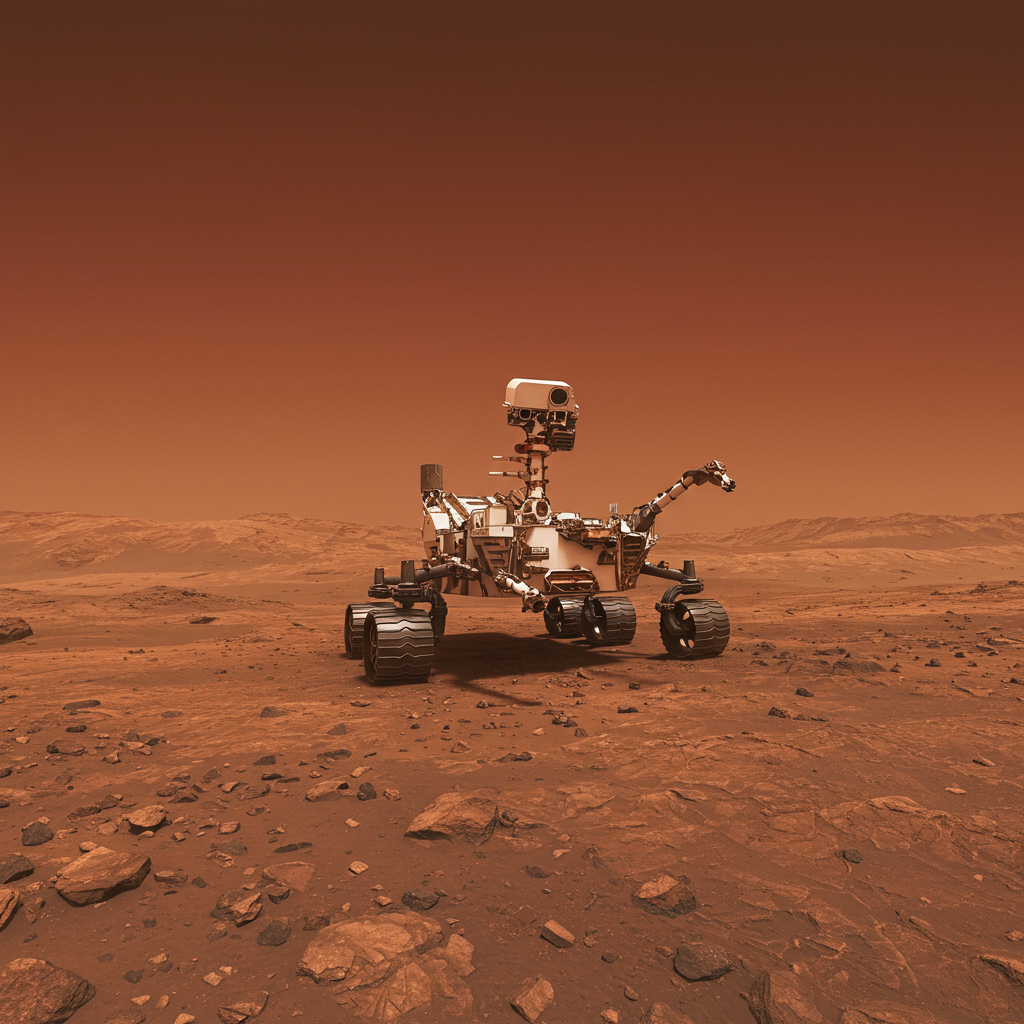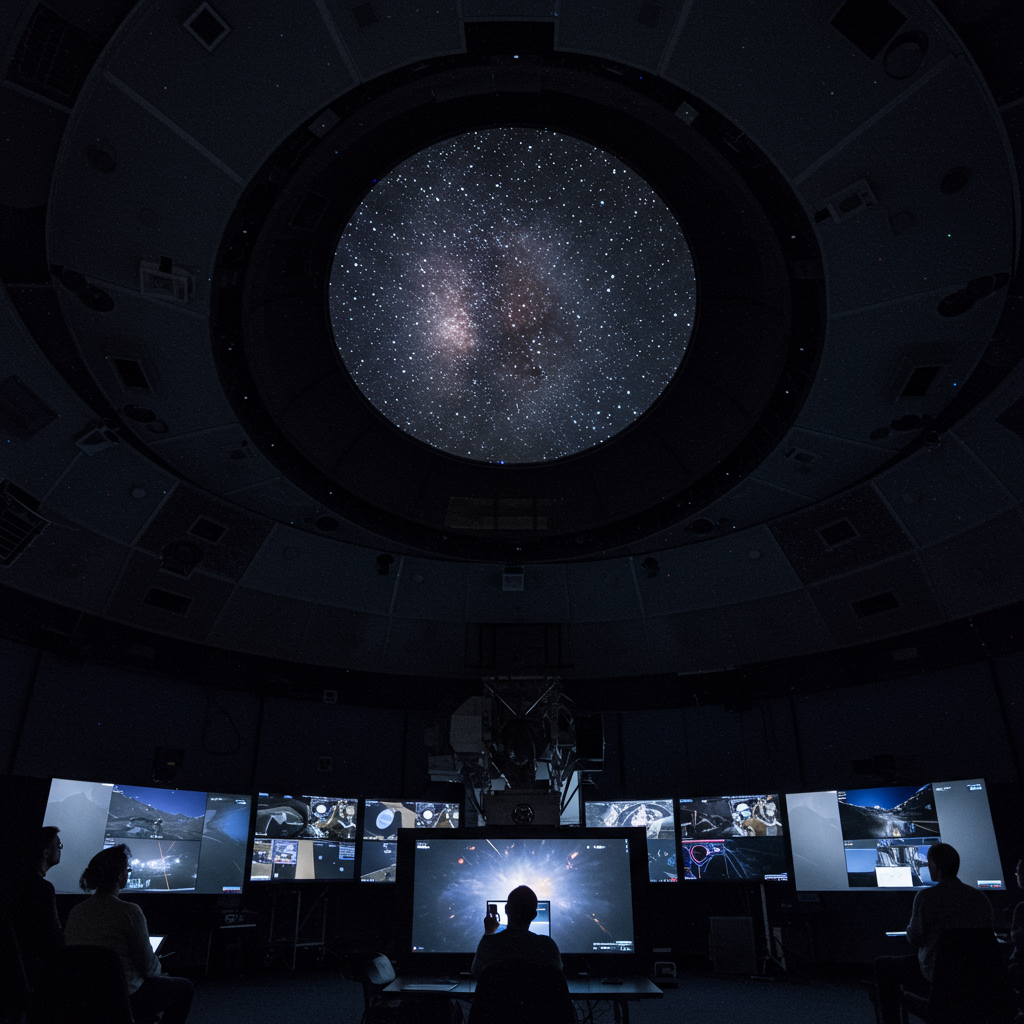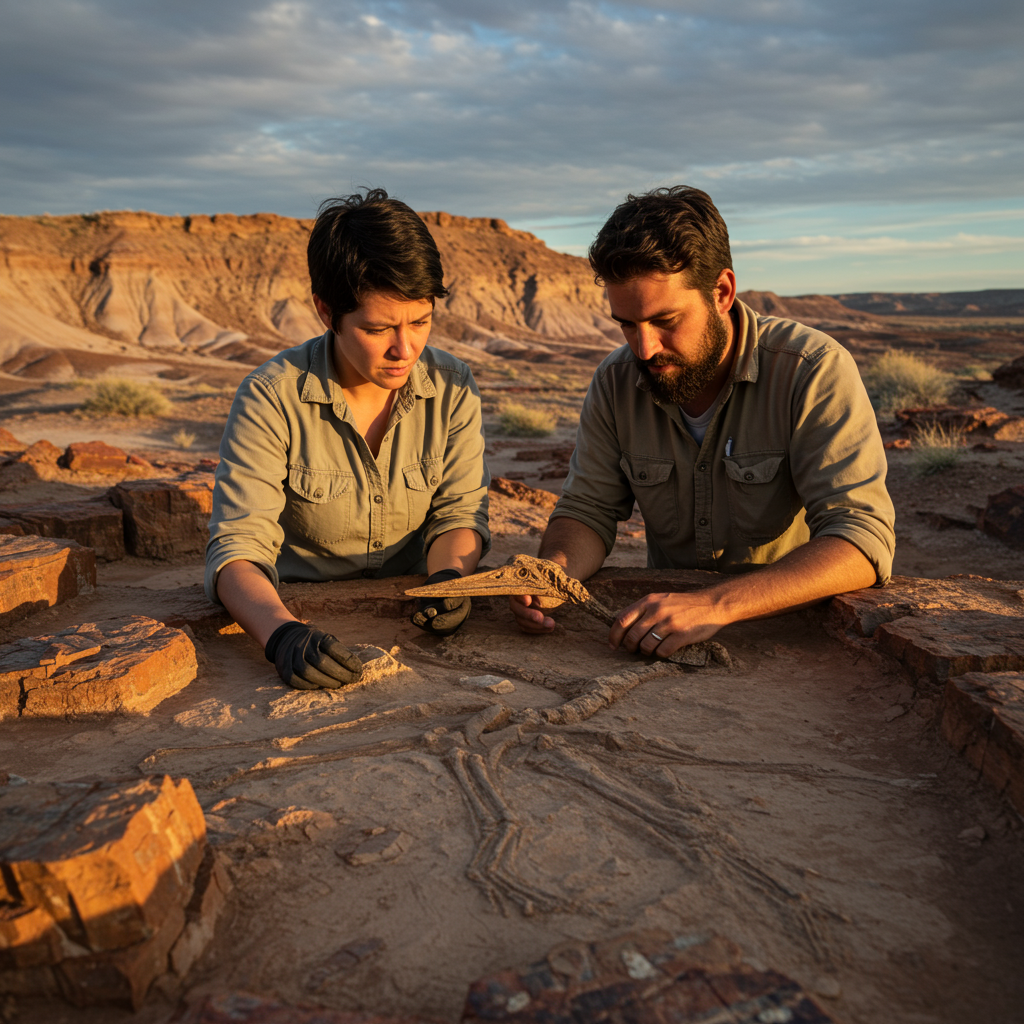The cosmos has just unveiled a breathtaking new portrait, thanks to the groundbreaking Vera C. rubin observatory. Located high in the Chilean Andes, this revolutionary facility has released its first official images, offering an unprecedented look at the universe. Among these spectacular debut shots is a detailed view of the iconic Trifid nebula, also known affectionately by some as the “Cotton Candy Nebula.” Captured by the observatory’s colossal LSST Camera, this initial glimpse is more than just a pretty picture; it signals the dawn of a new era in astronomical discovery and data collection, promising to reshape our understanding of space for decades to come.
The Trifid Nebula: A Cosmic Masterpiece Revealed
Situated approximately 5,000 light-years away within the constellation Sagittarius, the Trifid Nebula (officially Messier 20) is a captivating celestial object. Its common name, “Trifid,” comes from the Latin word for “three-lobed,” referring to the distinct dark lanes of dust that appear to divide the nebula into three sections. The new image from the Vera C. Rubin Observatory showcases this intricate structure with stunning clarity.
The vibrant colors visible in the image tell the story of the nebula’s composition and activity. Deep pink hues highlight regions of ionized gas, characteristic of an emission nebula. Here, intense radiation from energetic, newly formed stars causes the surrounding hydrogen gas to glow brightly. In contrast, soft blue areas represent a reflection nebula. These sections consist of dust and gas particles scattering light from nearby stars, much like fog illuminates streetlights on Earth. The dark regions are dark nebulae or dust lanes. These dense clouds of dust block light from behind, creating the striking divisions that give the Trifid Nebula its name. Within this dynamic cosmic cloud, active star formation is underway. The immense radiation and gravitational forces fuel this stellar nursery. As new stars ignite, they not only illuminate the nebula but also sculpt its surrounding gas and dust into the beautiful patterns observed.
The Vera C. Rubin Observatory: A New Era of Discovery
The Vera C. Rubin Observatory, perched on Cerro Pachón in central Chile, is a joint project of the U.S. Department of Energy and the National Science Foundation. Its core instrument is the Legacy Survey of Space and Time (LSST) Camera, the world’s largest digital camera. This technological marvel boasts an incredible 3,200-megapixel resolution. It is mounted on the 8.4-meter Simonyi Survey Telescope. This powerful combination allows the observatory to image vast portions of the sky with unprecedented speed and detail.
The debut images, including the Trifid Nebula view compiled from 664 exposures over four nights in May 2025, offer just a taste of its capabilities. The observatory’s primary mission over the next decade is ambitious: to conduct a comprehensive time-lapse survey of the entire Southern Hemisphere sky. It will capture an image approximately every 40 seconds. This rapid imaging pace allows the observatory to cover the entire visible southern sky roughly every three to four nights. Over ten years, each patch of sky will be revisited up to 800 times.
Beyond the Trifid: Cataloging the Cosmos
This continuous monitoring strategy will generate an astonishing amount of data. The observatory is expected to collect more data in its first year alone than all previous optical astronomy combined. This massive dataset, projected to reach 20 terabytes per night, will be made freely available to the global scientific community. The goal is to create a detailed “cosmic movie” that captures every visible change in the night sky.
Beyond deep-space wonders like the Trifid Nebula, the LSST’s rapid survey is designed to discover millions of new celestial objects. This includes vast numbers of asteroids within our own solar system. In its first week of test operations, the observatory quickly identified over 2,100 previously unknown asteroids. It also found seven new near-Earth objects (NEOs). Projections suggest the mission could discover as many as 5 million new asteroids over its lifetime, vastly exceeding the total discovered in the past two centuries. The survey will also track variable stars, detect thousands of supernovas, and map the distribution of galaxies across billions of light-years. This deep view into cosmic history allows astronomers to observe galaxies as they appeared billions of years ago, even before our solar system formed.
How Rubin Observatory Data Will Reshape Astronomy
The wealth of data collected by the Vera C. Rubin Observatory holds the key to unlocking some of the universe’s greatest mysteries. Scientists anticipate using this data to gain profound insights into dark matter and dark energy. These enigmatic components constitute the vast majority of the universe but remain poorly understood. The detailed time-lapse survey will enable researchers to study the dynamic universe. They can track how objects change, move, and interact over time.
The observatory’s mission is also critical for planetary defense efforts. By identifying and tracking potentially hazardous near-Earth objects (NEOs), it provides crucial information for assessing potential risks to Earth. The ability to map the Southern Hemisphere sky repeatedly will ensure transient events are detected. This continuous monitoring provides near real-time astronomical phenomena data. The accessible data will accelerate scientific progress worldwide. It fosters collaboration and empowers researchers to make groundbreaking discoveries about the cosmos’s past, present, and future. The Rubin Observatory marks a significant leap forward in our quest to understand the vast and dynamic universe we inhabit.
Frequently Asked Questions
What is the Trifid Nebula and why is the new Rubin Observatory image special?
The Trifid Nebula (Messier 20) is a star-forming region located 5,000 light-years away in Sagittarius. Its name comes from dark dust lanes that divide it into three lobes. The new image from the Vera C. Rubin Observatory is special because it’s one of the first released from this powerful new telescope. It shows the nebula’s intricate structure and vibrant colors in unprecedented detail. These colors reveal different compositions, with pink showing ionized gas and blue showing scattered starlight.
How will the Vera C. Rubin Observatory’s survey help scientists study the universe?
The Vera C. Rubin Observatory will conduct a decade-long Legacy Survey of Space and Time (LSST). It will repeatedly photograph the Southern Hemisphere sky every few nights. This rapid, wide-field survey will generate an enormous dataset – more than all previous optical astronomy combined. Scientists will use this data to create a time-lapse cosmic “movie.” This will help them study dynamic events like supernova explosions and the movement of asteroids. The survey is also designed to investigate fundamental questions about dark matter and dark energy.
Where can I view the first images from the Vera C. Rubin Observatory?
The first images from the Vera C. Rubin Observatory were released publicly in June 2025. You can typically view these initial images, including the stunning Trifid Nebula view, on the official Vera C. Rubin Observatory website. Many astronomical news sites, university outreach pages, and science publications also feature these images. Check their official channels or reputable science news sources for high-resolution versions and related information.
Conclusion
The release of the first images from the Vera C. Rubin Observatory, including the stunning portrait of the Trifid Nebula, marks a pivotal moment in astronomy. These initial glimpses showcase the extraordinary capability of the LSST Camera and the potential of the observatory’s decade-long mission. By creating the most comprehensive time-lapse survey of the night sky ever attempted, Rubin Observatory will provide scientists with an unparalleled dataset. This will drive discoveries about everything from nearby asteroids to the nature of dark matter and the distant past of the universe. As the observatory continues its work, we can anticipate a continuous stream of breathtaking images and groundbreaking insights. This promises to expand our knowledge of the cosmos and perhaps help safeguard our planet. The era of dynamic astronomy has truly begun.
Word Count Check: 1068




